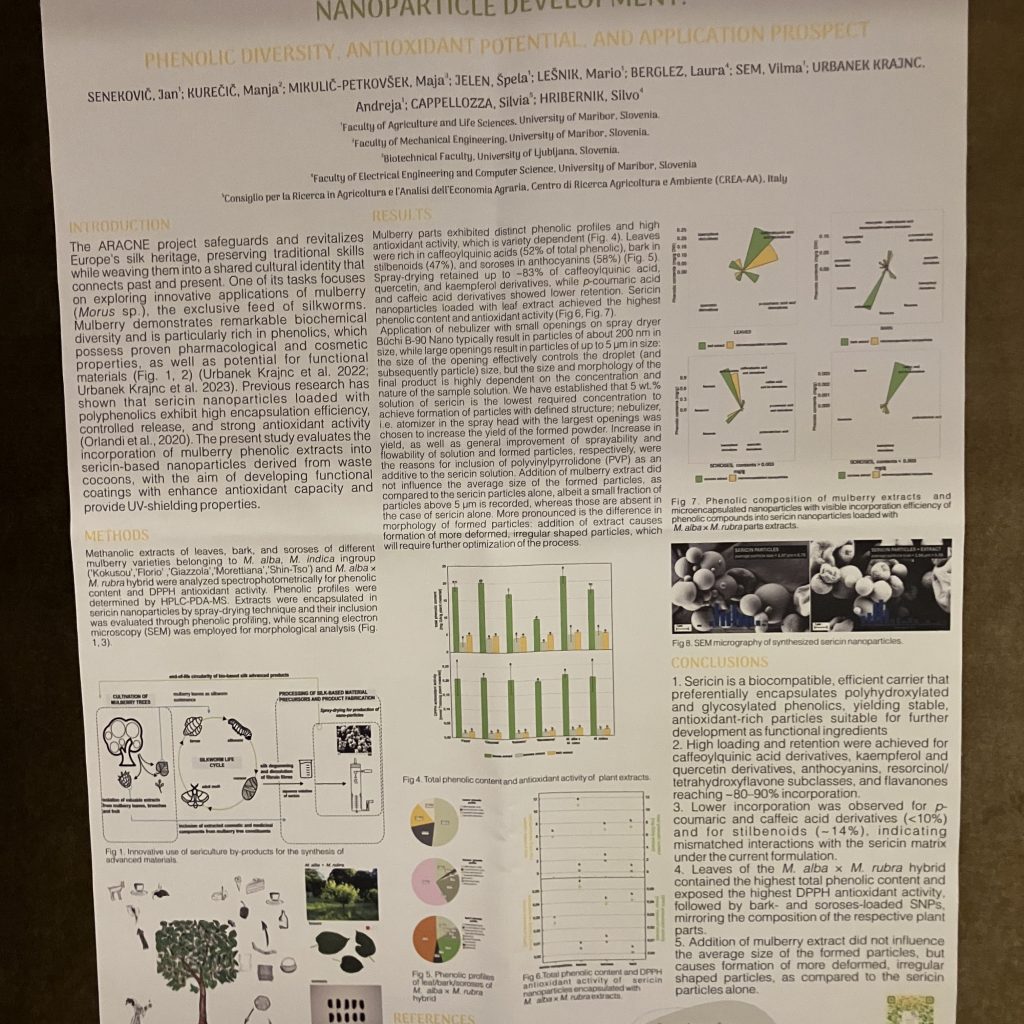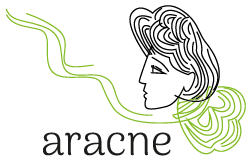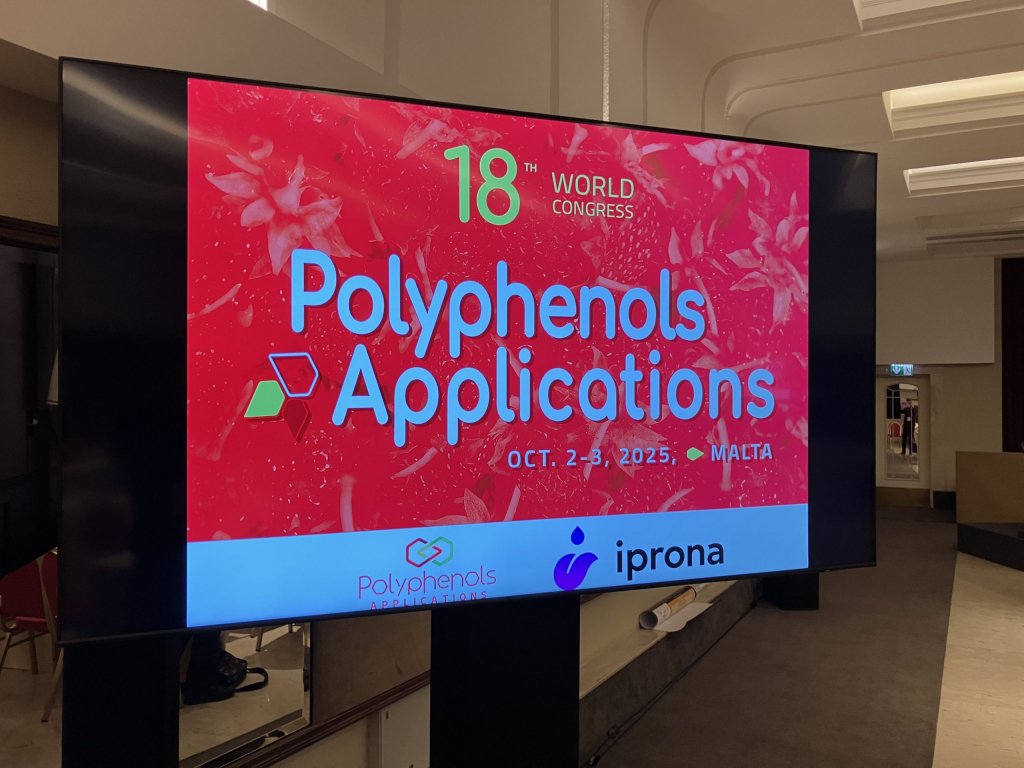The University of Maribor ARACNE team participated in the international conference Polyphenols Applications 2025, held from 2–3 October 2025 in Malta (https://www.polyphenols-site.com).
This year’s conference focused on topics related to the innovative and sustainable use of phenolic compounds, their chemical reactivity, molecular engineering of phenolic biosynthetic pathways, clinical applications, and their role in metabolism and the human microbiota. The conference included two keynote lectures, 11 lectures, 20 short oral presentations, and 62 posters. Participants represented scientific institutions and universities from 29 countries, including Belgium, Brazil, Bulgaria, Chile, Czech Republic, Finland, France, Croatia, India, Israel, Italy, Japan, Canada, Latvia, Malta, Germany, the Netherlands, Poland, Portugal, Romania, Slovakia, Slovenia, Serbia, Spain, Sweden, Switzerland, the United Kingdom, and the United States of America.
The novel research on mulberry- and silk-based materials was presented as a poster by Jan Senekovič, titled “Integrating mulberry extracts and sericin for nanoparticles development: phenolic diversity, antioxidant potential and application prospect,” during the Friday session of the conference chaired by Dr. Jan Frederik Stevens (University of Oregon, USA) and Dr. Andreas Schieber (University of Bonn, Germany).
The work—prepared by Jan Senekovič, Manja Kurečič, Maja Mikulič-Petkovšek, Špela Jelen, Mario Lešnik, Laura Berglez, Vilma Sem, Andreja Urbanek Krajnc, Silvia Cappellozza, and Silvo Hribernik—is the result of a collaboration between the Faculty of Agriculture and Life Sciences, UM; the Faculty of Mechanical Engineering, UM; the Biotechnical Faculty, UL; the Faculty of Electrical Engineering and Computer Science, UM; and CREA (Consiglio per la Ricerca in Agricoltura e l’Analisi dell’Economia Agraria), within the Horizon Europe ARACNE (Advocating the Role of Silk Art and Cultural Heritage at National and European Scale) project.
In the first phase of the research, the authors determined the phenolic profiles and antioxidant activity of leaf, bark, and fruit extracts of selected mulberry varieties out of the Morus alba, M. indica and M. rubra ingroup. Based on these results, the hybrid M. alba × M. rubra was selected, as its extracts exhibited high phenolic content and strong antioxidant potential. In the second phase, phenolic extracts from the leaves, fruits, and bark of the selected hybrid were microencapsulated into sericin nanoparticles using the spray-drying technique. Sericin, obtained from waste cocoons, represents an excellent example of utilizing sericultural by-products in modern and environmentally friendly technologies. The developed sericin nanoparticles with encapsulated extracts were re-extracted, and their phenolic profiles and antioxidant activity were evaluated.
The study revealed that phenolic leaf extracts of M. alba × M. rubra showed the highest potential for microencapsulation in sericin nanoparticles. Different phenolic groups were incorporated with varying efficiency, among the most efficient integration was achieved for kaempferol derivatives, quercetin derivatives, anthocyanins, resorcinol tetrahydroxyflavones, and caffeoylquinic acids. The lowest incorporation efficiency was observed for p-coumaric acid derivatives, caffeic acid derivatives, and stilbenoids. The sericin nanoparticles containing encapsulated phenolic extracts were larger and less regularly shaped compared to those without encapsulated extracts. These nanoparticles show promising potential for cosmetic applications.
The conference was an excellent opportunity to gain insight into emerging scientific trends in plant polyphenol research, which sparked ideas for further studies and project activities.




